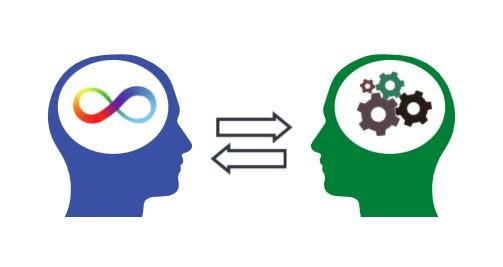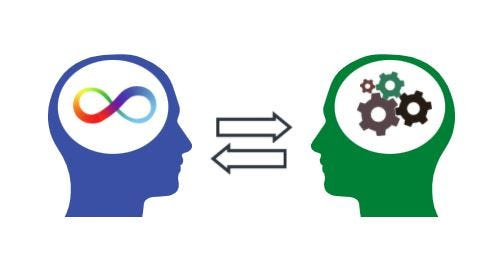Dear Autism Professionals: We Aren’t “Mind-Blind.”
You’ve probably heard the common myth that autistic people “lack empathy,” “lack theory of mind,” or are “mind blind.”
You’ve probably heard the common myth that autistic people “lack empathy,” “lack theory of mind,” or are “mind blind.”
These are all false.
The double empathy problem helps us understand what’s actually happening when autistic and allistic (non-autistic) people interact.
In the 1980s, the “theory of mind” model of autism was predominant. It attributed autism to “mindblindness”: an inability to understand that other people know, want, feel, or believe things.
These days, we know this is false. Read any piece of writing by an Autistic person, and you’re bound to see examples of empathy, understanding, and theory of mind.
—
Autistic people experience the world differently than allistic people. We communicate differently, form and maintain relationships differently, sense our environments and bodies differently, and feel and display our emotions differently than a neurotypical person does.
Autistic people are taught how to understand the allistic point of view through therapies and coaching from well-meaning allistic people trying to help us fit into an allistic society, but allistic people are rarely taught how to understand Autistic people from the Autistic point of view.
Combine this with what lots of psychological research has taught us —
it’s more difficult for anyone to empathize with someone whose perspective they don’t understand
— and you get the double empathy problem.
“Double empathy” refers to a two-way divide between people of different neurotypes who are interacting with each other. It flips the one-way “no empathy” assumption on its head, looking at these interactions instead as an intercultural phenomenon that causes misunderstandings and miscommunications.
We all make a lot of assumptions when we interact with someone. Have you ever caught yourself assuming that the person you’re talking to experienced the same event just like you did? We can have wildly different internal experiences of the same external event, just because we’re all different people with different past experiences and personality traits!
But when these assumptions happen in inter-neurotype interactions, misunderstandings abound.
We’re told that Autistic people lack social awareness, but what kind of social awareness? When we zoom in and look at different kinds of social interactions, we make a striking discovery. In interactions with other Autistic people, this “deficit” in social awareness is non-existent. We communicate perfectly well with each other.
In the same way that allistic communication isn’t intuitive to Autistic people, Autistic communication is not intuitive to allistic people.
—
Because Autistic people’s perspectives are not uplifted or heard by broader society, we are regularly misunderstood and pathologized. Take a look at the scientific literature about autism. Where is the focus? Hint: researchers, scientists, and clinicians are focused on teaching Autistic people to understand allistic perspectives. What would happen if we put just as much energy into helping allistic people understand Autistic perspectives?
—
The double empathy problem shows us how important it is to help allistic people understand the Autistic perspective. The more we understand each other, the more we can empathize with each other.
A couple of resources for further reading:
• This presentation explains the double empathy problem and how it relates to “theory of mind”
• A great example of a neuro-inclusive social story




